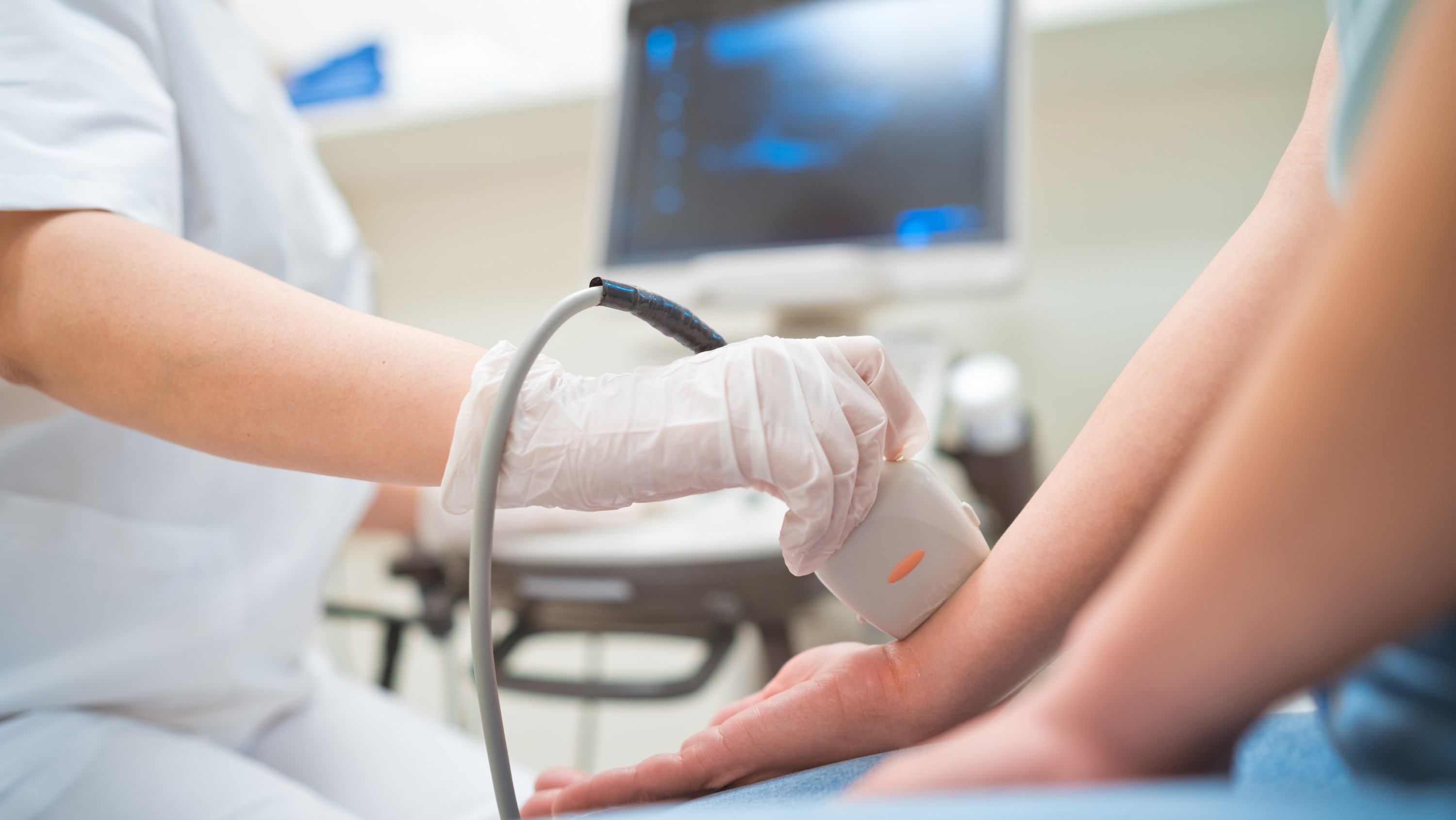A University of Alberta researcher is being awarded $748,500 from Alberta Innovates to test a new portable ultrasound system that could shorten wait times and save money in hospital emergency departments.
The Ultrasound Arm Injury Detection tool uses artificial intelligence to allow triage nurses or primary care physicians to accurately scan for fractures of the wrist or elbow or tears in the rotator cuff.
Suspected injury to the upper limbs is responsible for one out of every five visits to emergency departments in Canada, according to Abhilash Hareendranathan, assistant professor in the Department of Radiology and Diagnostic Imaging, who developed the system.
“What happens right now is people have to wait and — depending on which emergency department you go to and how busy they are that day — it could take from two to six hours to have an X-ray and then see the doctor,” Hareendranathan says. “With our tool, if you are able to rule out a fracture, that cuts down on the wait time and saves money on the diagnosis.”
The new tool uses AI to augment a portable ultrasound device, allowing the operator to determine whether an accurate scan has been captured and then reporting on whether a fracture has been detected.
The tool can be used by a “lightly trained” nurse or physician rather than requiring a sonographer or radiologist, who must train intensively to learn how to operate traditional diagnostic imaging equipment.
“The novice user often gets a good scan but they don’t know at what point to freeze the image, whereas in our system we automate that process,” explains Hareendranathan. “If it’s not a fracture, you will probably be given a painkiller and you’re good to go home.”
If a fracture is detected, the patient gets a followup X-ray or MRI scan to confirm the diagnosis and treatment plan, which can range from a simple splint to surgery for more severe injuries.
Hareendranathan has worked for a decade with a team of researchers who are striving to make portable ultrasound technology accessible outside of big-city hospitals. Radiologist Jacob Jaremko is now doing clinical trials on an AI-powered portable ultrasound system to detect hip dysplasia in newborns, and Kumaradevan Punithakumar, with the Servier Virtual Cardiac Centre at the Mazankowski Alberta Heart Institute, uses a combination of robotics and AI to produce 3D images of the heart using ultrasound.
“Ultrasound is fast, safe and highly sensitive to fractures, making it ideally suited for wrist examination in emergency departments,” Hareendranathan reported in a recently published research paper.
Hareendranathan has up to three years to clinically validate his system with patients at the pediatric emergency department of the Stollery Children’s Hospital and an MIC medical imaging clinic in Edmonton.
He’s confident the system will prove easy to use and “likable” to the staff there.
“These three conditions are not lethal by any stretch of the imagination, but their prevalence in emergency departments impedes treatment for more significant cases,” Hareendranathan says. “It’s a question of equity and also personalized treatment of the patient.”
“Funding medical innovations is critically important to advancing technologies from the lab into clinics around Alberta,” says Nate Glubish, Alberta minister of Technology and Innovation, who was at the U of A for today’s announcement of Alberta Innovates funding totalling $12.4 million for new health-care research. “That’s not only good for health innovation but for all Albertans.”
“Creating innovation in the health system requires support at all levels, from the earliest stages right through to those that are commercially viable,” says Laura Kilcrease, CEO of Alberta Innovates. “When innovators like those in the AICE – Concepts and LevMax-Health programs succeed, we achieve better patient outcomes and a stronger economy.”
Six other U of A projects will also receive funding from Alberta Innovates.
“The University of Alberta is a global leader in health research, and we’ve identified it as one of our top priorities,” says Aminah Robinson Fayek, U of A vice-president of research and innovation. “We’re grateful that Alberta Innovates supports our researchers’ efforts to get their life-changing innovations from the lab to the bedside, to help improve outcomes for patients in Alberta and beyond.”
The Accelerating Innovations into Care – Concepts program supports research on ways to use digital and data-enabled solutions for the health-care system.
- Richard Fahlman, biochemistry
“Integrating dark data into diagnostic biomarkers”
$750,000 - Walter Maksymowych, medicine
“Metabolomics precision diagnostics and prognostics for chronic inflammatory arthritis”
$750,000 - Lindsey Westover, biomedical engineering
“BackSCNR: Scoliosis management through noninvasive surface topography”
$750,000
The LevMax-Health program advances early-stage health-care innovations to commercial readiness.
- Milad Nazarahari, mechanical engineering
“An intelligent robotic system for minimally supervised data-driven teleassessment and personalized telerehabilitation poststroke”
$566,730 - Eleni Stroulia, computing science
“An Alberta-centred community-tailored implementation of the AVOID real-world intervention for older adults”
$750,000 - Roger Zemp, electrical and computer engineering
“Multi-contrast high-speed metabolic and molecular virtual histology on a cart”
$750,000
